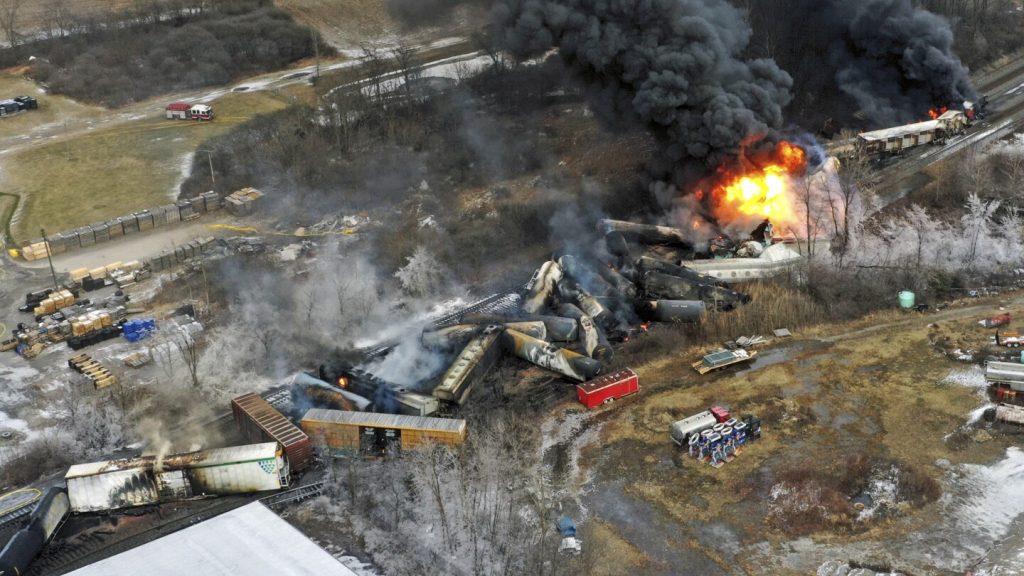A disastrous Norfolk Southern train derailment last year in East Palestine, Ohio, led to severe contamination of the local creeks. Workers involved in the cleanup reported symptoms such as headaches and nausea, consistent with exposure to the chemicals released during the cleanup process. Residents in the area have also reported health issues such as rashes, asthma, and even male breast cancer. Researchers are still evaluating the long-term health impact of the disaster and whether there will be cancer clusters in the future.
Residents affected by the derailment have until August 22 to decide whether to accept compensation of up to $25,000 as part of a class action settlement with the railroad. Accepting the money means forfeiting the right to sue later when the full extent of health issues becomes known. Norfolk Southern spokesperson Heather Garcia stated that none of the workers who fell ill during the cleanup experienced lingering or long-term symptoms, emphasizing the company’s commitment to health and safety.
The cleanup efforts at the contaminated creeks in East Palestine continued, but were eventually halted due to another worker getting sick. Independent toxicologist George Thompson criticized the use of high-pressure air knife tools in the cleanup process, stating that it spread chemicals for potential exposure, posing risks to residents. Residents like Jami Wallace reported adverse effects from the cleanup machines, indicating gaps in protecting community health during the cleanup process.
A report by CTEH, submitted to the Unified Command overseeing the disaster response, highlighted the illnesses among workers but was not made public. Residents like Misti Allison expressed frustration at the lack of transparency and monitoring of long-term health effects post-derailment. The East Palestine derailment, one of the worst rail disasters since 2013, prompted calls for rail safety reform, with little progress made in Congress.
Following the derailment, major freight railroads implemented measures to enhance safety and prevent future accidents. The completion of the NTSB investigation into the crash this summer renewed hopes for rail safety legislation, but concrete actions have been minimal. Environmental testing around the creeks revealed elevated levels of various chemicals, though the presence of the most concerning chemicals was not detected. The EPA reported no ongoing exposure to toxic chemicals, with clean-up efforts on track for completion this year.


